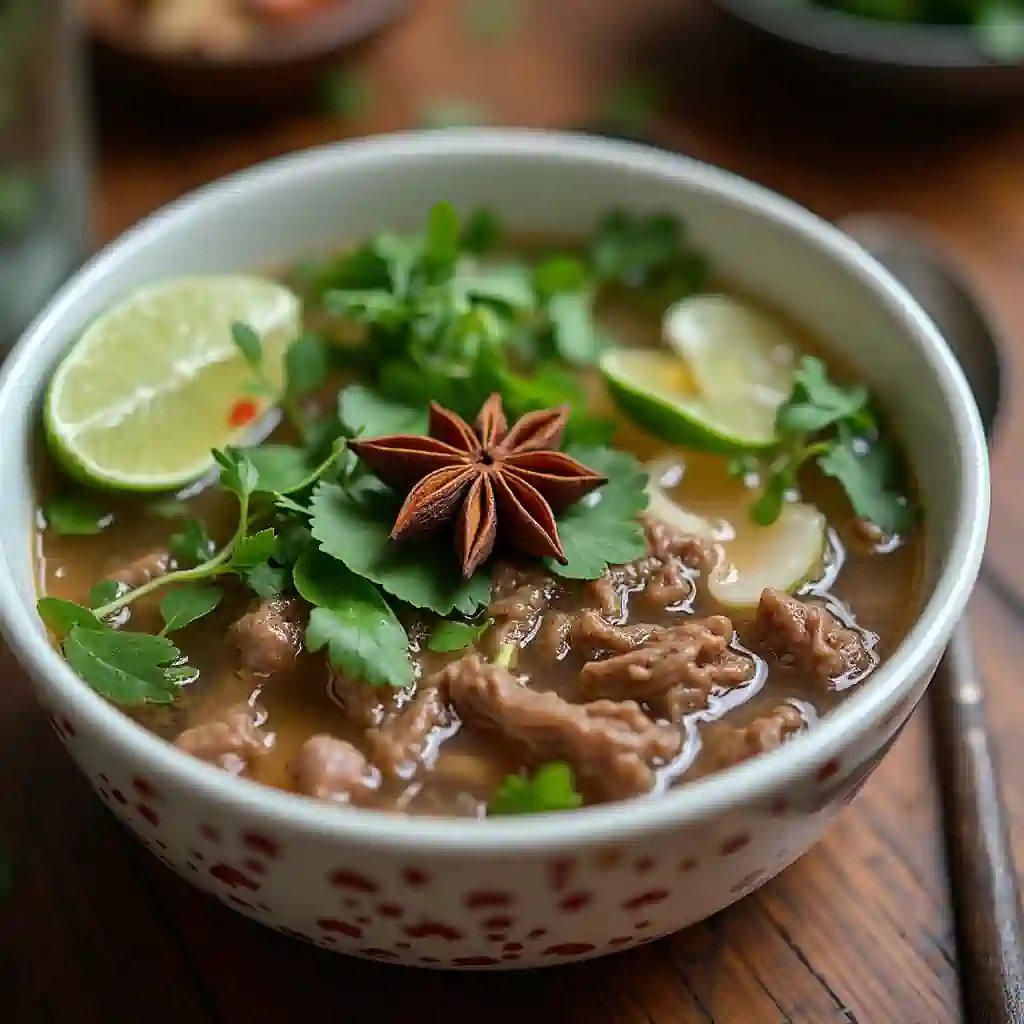Star anise is more than just a pretty spice—it’s a powerhouse of flavor and health benefits. With its unique star-shaped pods and warm, licorice-like aroma, star anise has been a staple in kitchens and medicine cabinets for centuries. Whether you’re a seasoned chef or a curious foodie, this guide will take you on a journey through the fascinating world of star anise. From its rich history and culinary uses to its impressive health benefits and global significance, we’ll cover everything you need to know about this versatile spice. So, let’s dive in and discover why star anise deserves a spot in your pantry!
Table of Contents
Introduction to Star Anise
What is Star Anise?
Star anise is a star-shaped spice that comes from the fruit of the Illicium verum tree, native to China and Vietnam. Its name comes from its distinctive shape, which resembles an eight-pointed star. Each pod contains small, shiny seeds that pack a punch of flavor—sweet, spicy, and reminiscent of licorice. But don’t confuse it with regular anise; while they share a similar taste, they come from entirely different plants.
Star anise is a key ingredient in many Asian dishes, but its uses go far beyond the kitchen. It’s also a star player in traditional medicine, thanks to its impressive health benefits.
Historical and Cultural Significance
The history of star anise is as rich as its flavor. For centuries, it has been a cornerstone of Chinese medicine, used to treat everything from digestive issues to respiratory problems. In fact, it’s one of the main ingredients in the famous Chinese five-spice powder, a blend that’s essential in many Asian recipes.
But star anise isn’t just limited to Asia. Over time, it has made its way into global cuisines, adding depth and complexity to dishes like Vietnamese pho, Indian biryani, and even European mulled wine. Its unique flavor and versatility have earned it a special place in kitchens around the world.
“Star anise isn’t just a spice—it’s a bridge between cultures, connecting traditions and flavors across the globe.”
The Flavor Profile and Culinary Uses of Star Anise
Understanding the Flavor of Star Anise
Star anise is a spice that’s hard to forget once you’ve tasted it. Its flavor is a delightful mix of sweet, spicy, and licorice-like, with subtle hints of cloves and cinnamon. When used in cooking, it adds a warm, aromatic depth that can transform even the simplest dish into something extraordinary. Interestingly, its flavor intensifies when heated, making it perfect for slow-cooked dishes and simmered broths.
“The flavor of star anise is like a warm hug—comforting, complex, and unforgettable.”
Culinary Applications of Star Anise

Savory Dishes
In savory cooking, star anise is a game-changer. It’s a key ingredient in Vietnamese pho, where it infuses the broth with its signature warmth and sweetness. Similarly, in Chinese cuisine, it’s used in braised dishes like red-cooked pork and duck, adding a rich, aromatic layer to the meat. Indian biryani and curries also benefit from its unique flavor, making it a versatile spice for global cuisines.
Sweet Dishes
When it comes to desserts, star anise shines just as brightly. It pairs beautifully with fruits like pears and apples, enhancing their natural sweetness. Think poached pears with a hint of star anise or spiced apple pie with a touch of this aromatic spice. It’s also a star in baked goods like gingerbread and cookies, where it adds a warm, festive note.
Beverages
Don’t forget drinks! Star anise is a popular addition to teas, mulled wines, and spiced ciders. Its licorice-like flavor complements the sweetness of these beverages, making them perfect for cozy evenings or holiday gatherings.
How to Use Star Anise in Cooking
Using star anise is easy, but there are a few tips to get the most out of it. Whole pods are ideal for slow-cooked dishes, as they release their flavor gradually. For quicker recipes, ground star anise works well, but use it sparingly—its flavor is potent! Toasting the pods before use can enhance their aroma, and remember to remove them before serving, as they’re not meant to be eaten whole.
For more inspiration, check out our guide on What Is The Basic Meatloaf Formula?
Health Benefits and Medicinal Properties of Star Anise
Nutritional Value
This spice isn’t just a flavor powerhouse—it’s also packed with nutrients. It’s rich in vitamins like A and C, which support skin health and immunity, and minerals like iron and calcium, essential for strong bones and blood. Plus, it’s loaded with antioxidants that help fight free radicals and reduce inflammation.
Supporting Digestive Health
One of the most well-known benefits of this spice is its ability to soothe digestive issues. It’s often used to relieve bloating, gas, and indigestion, thanks to its carminative properties. A cup of tea made with this spice after a heavy meal can work wonders for your stomach.
Fighting Germs Naturally
This spice is a natural warrior against bacteria, fungi, and viruses. In fact, it’s a key ingredient in the production of Tamiflu, a medication used to treat influenza. Its antimicrobial properties also make it a popular choice for natural remedies and herbal teas.
Boosting Respiratory and Immune Health
If you’re battling a cough or cold, this spice can be your best friend. Its expectorant properties help clear mucus, while its immune-boosting nutrients keep you strong. A warm cup of tea with this spice and honey is a comforting remedy for respiratory issues.
“From soothing your stomach to boosting your immunity, this spice is a true multitasker.”
For more on the health benefits of spices, explore our article on What is a Good Spice for Venison?
Star Anise in Global Cuisines
A Staple in Asian Cooking
When it comes to Asian cooking, this spice is a superstar. In Chinese cuisine, it’s a key ingredient in five-spice powder, a blend that adds depth to dishes like roasted duck and char siu pork. Over in Vietnam, it’s the secret behind the rich, aromatic broth in pho, a beloved noodle soup. Indian cuisine also embraces it, using it in biryanis and curries to create complex, layered flavors.
“In Asian kitchens, this spice is more than an ingredient—it’s a tradition passed down through generations.”
Its Role in European and Western Dishes
While it has deep roots in Asia, this spice has also found a home in European and Western kitchens. In France, it’s used to flavor liqueurs like pastis, while in Scandinavia, it’s a popular addition to mulled wines and glögg. Bakers in the West often use it in holiday treats like gingerbread and spiced cookies, where its warm, sweet flavor adds a festive touch.
Creative Modern Uses
Modern chefs are finding new ways to incorporate this spice into their dishes. For example, it’s being used to infuse syrups for cocktails, marinades for grilled meats, and even spice blends for rubs. Its versatility makes it a favorite among creative cooks looking to add a unique twist to their recipes.
For more inspiration on using spices in innovative ways, check out our article on How do you make venison chili less gamey?
Tips for Buying, Storing, and Using Star Anise
Choosing the Best Quality
When buying this spice, look for whole pods that are intact, plump, and reddish-brown in color. Avoid pods that are broken or have a dull appearance, as they may have lost their flavor. Be cautious of Japanese star anise, which looks similar but is toxic and not suitable for consumption.
Storing for Freshness
To keep your spice fresh and flavorful, store it in an airtight container away from light, heat, and moisture. Whole pods can last up to a year, while ground versions should be used within six months for the best flavor.
Preparing and Using It
If a recipe calls for ground spice, you can easily grind whole pods using a spice grinder or mortar and pestle. For infusing liquids, like broths or teas, simply add whole pods and let them simmer to release their flavor. Remember to remove the pods before serving, as they’re not meant to be eaten.
“Proper storage and preparation can make all the difference in getting the most out of this versatile spice.”
FAQs About Star Anise
What Can You Do with This Spice?
Star anise is a versatile spice used in both cooking and traditional medicine. In the kitchen, it adds a warm, sweet, and licorice-like flavor to dishes like soups, stews, and desserts. Medicinally, it’s known for its digestive, antimicrobial, and immune-boosting properties.
How Does It Compare to Cinnamon?
While both spices are warm and aromatic, they’re not the same. Star anise has a stronger licorice flavor, while cinnamon is sweeter and more woody. They can complement each other in recipes but aren’t interchangeable.
Is It Similar to Nutmeg?
Not exactly. Nutmeg has a nutty, slightly sweet flavor, while star anise is more licorice-like and intense. However, both spices are often used in baking and spiced beverages.
What Does It Taste Like?
The flavor of star anise is sweet, spicy, and reminiscent of licorice, with hints of cloves and cinnamon. It’s a complex spice that adds depth to both savory and sweet dishes.
“Got questions about this spice? We’ve got answers—it’s as fascinating as it is flavorful!”
Bonus Tips and Recipe Variations
Gluten-Free and Vegan Recipes
If you’re following a gluten-free or vegan diet, this spice can still shine in your kitchen. Use it to flavor gluten-free baked goods like spiced cookies or add it to vegan stews and curries for a rich, aromatic touch.
Infused Syrups and Cocktails
One creative way to use it is by making infused syrups. Simply simmer water, sugar, and a few pods until the mixture thickens. Use the syrup in cocktails, mocktails, or even drizzled over pancakes.
Holiday Baking Ideas

During the holidays, this spice can elevate your baking game. Add it to gingerbread, fruitcakes, or spiced cookies for a festive twist. Its warm, sweet flavor pairs perfectly with seasonal ingredients like cinnamon, nutmeg, and cloves.
“From cocktails to cookies, this spice is the secret ingredient that makes every dish shine.”
By now, you’ve learned everything you need to know about star anise—from its rich history and culinary uses to its health benefits and creative applications. Whether you’re cooking a comforting bowl of pho or experimenting with infused syrups, this versatile spice is sure to add a touch of magic to your dishes. Happy cooking!
For more inspiration check out our articles

